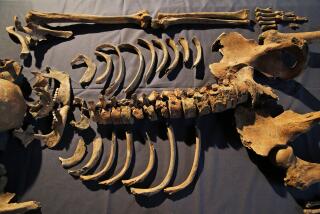The plague’s deadly pedigree goes back 3,000 years earlier than thought
Turns out the plague was, er, plaguing humans far earlier than once thought. A study of ancient DNA pulled from human teeth in Asia and Europe finds that the bacteria Yersinia pestis had infected humans as far back as 2,800 to 5,000 years ago – perhaps three millenniums earlier than expected.
The finding, published in the journal Cell, pushes back the long and unhappy history between humans and the disease – and points to genetic changes that later may have helped the pathogen turn massively deadly.
“Our results show that plague infection was endemic in the human populations of Eurasia at least 3,000 years before any historical recordings of pandemics,” the study authors wrote.
The plague has been responsible for three major human pandemics. The first pandemic, which began with the Plague of Justinian, around 541 to 544 AD, continued sporadically until around 750 AD. The second pandemic is perhaps better known – it was when the Black Death swept through Europe from 1347 to 1351 AD, wiping out about a third to half of the continent’s population, and continued to re-emerge through the 1700s (including the notable Great Plague of 1665 to 1666 AD). The third pandemic arose in China in the 1850s and grew into a serious epidemic in 1894 that spread to other parts of the globe until the mid-1900s.
Along with killing an overwhelming number of people, the plagues have helped alter the course of human history, the study authors point out.
“Economic and political collapses have also been in part attributed to the devastating effects of the plague. The Plague of Justinian is thought to have played a major role in weakening the Byzantine Empire,” the authors wrote, “and the earlier putative plagues have been associated with the decline of Classical Greece and likely undermined the strength of the Roman army.”
Scientists naturally want to probe how far back this relationship between human and bacterium goes, but it’s hard to pin down when Y. pestis emerged in the microbial family tree.
“Molecular clock estimates have suggested that Y. pestis diversified from the more prevalent and environmental stress-tolerant, but less pathogenic, enteric bacterium Y. pseudotuberculosis between 2,600 and 28,000 years ago,” the study authors wrote.
That’s a pretty wide window. And while it’s possible that humans’ experience with Y. pestis goes back much longer than the historical record, the oldest evidence pulled from human skeletons goes back only about 1,500 years.
To further probe this mystery, an international team led by Danish researchers sequenced the DNA pulled from the teeth of 101 Bronze Age humans excavated from around Europe and Asia. Seven of them (one each from present-day Armenia, Poland and Estonia and four from what is now Russia) carried bacterial DNA sequences that bore a striking similarity to the Y. pestis genome.
“Our findings suggest that the virulent, flea-borne Y. pestis strain that caused the historic bubonic plague pandemics evolved from a less pathogenic Y. pestis lineage infecting human populations long before recorded evidence of plague outbreaks,” the study authors wrote.
The scientists found that Y. pestis had emerged by the end of the 4th millennium BC (somewhere around 3,000 BC), and had spread across Eurasia in the centuries that followed.
“These early plagues may have been responsible for the suggested population declines in the late 4th millennium BC and the early 3rd millennium BC,” the scientists wrote.
But certain crucial genes that made the plague so virulent in the common era seemed to be missing in the Bronze Age bacteria. So it seems that these strains, while causing pneumonic and septicemic plague, were not able to cause the much-feared bubonic plague.
It was probably with later mutations, when the microbe adapted to be able to piggyback on fleas to reach humans (rather than passing merely from person to person) that things took a serious turn for the worse, they added.
“Our data suggest that Y. pestis did not fully adapt as a flea-borne mammalian pathogen until the beginning of the 1st millennium BC, which precipitated the historically recorded plagues,” the study authors wrote.
Follow @aminawrite on Twitter for more fascinating science news.







